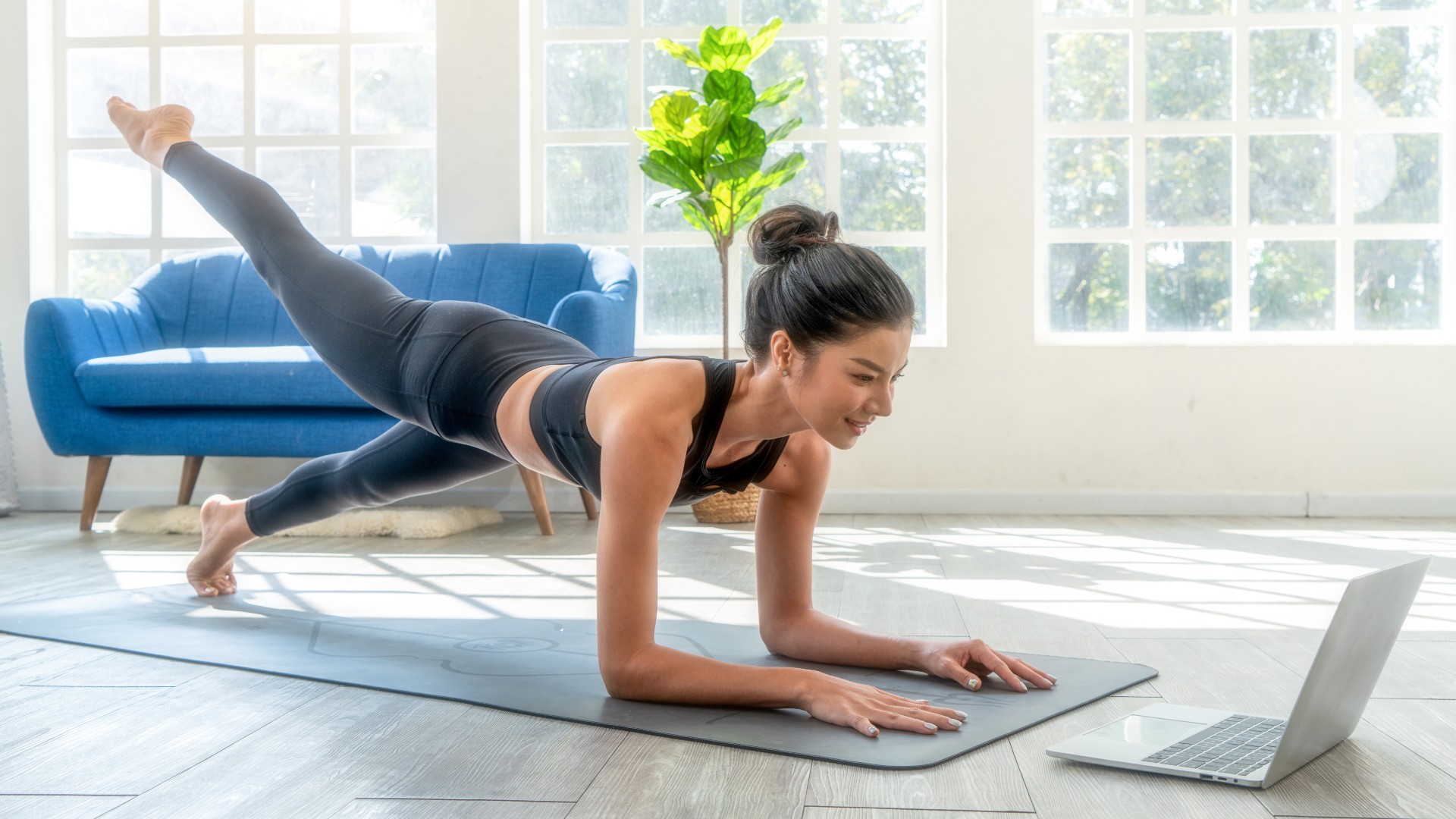
Whether you live in a second floor apartment or just want to keep workouts low-impact, this no-jumping HIIT Pilates workout builds stronger core and arm muscles and only takes 10 minutes.
You don’t need anything for this workout except for a set of light dumbbells and an exercise mat — I highly recommend the best adjustable dumbbells as you might want to change weights while you exercise.
Led by trainer Bianca Wise for Alo Moves, your Pilates routine is about to get much sweatier than your average class, balancing high-intensity training with the main principles of Pilates — strengthening, lengthening and improving posture, core control and stability.

Pilates workouts don’t usually stimulate the part of me that wants an intense sweat fest (although, that’s not the point of Pilates), so this upper-body routine surprised me, my arms and my abs. Here’s how to access the Pilates HIIT workout yourself, the benefits and my verdict.
What is the no-jumping HIIT Pilates routine by Alo Moves?
The Alo Moves series marries boxing intensity and a quick-paced Pilates practice. You can expect to raise your heart rate and sculpt your core and arm muscles without jumping or explosive movements like burpees. For those who like to exercise at high intensity without high impact on your joints, this one’s for you.
The difficulty has been labeled “moderate” and a level 3 intensity, meaning you’ll ramp up the sweat factor, test endurance and work on “faster-paced movement and exercises.” It takes 10 minutes and focuses on your arms and core.
You’ve got a good mix in here, including boxing elements, punches that require you to be light on your feet and more typical high-rep pulsing exercises you’d find in a Pilates session. Core exercises include staples like woodchoppers and side bends, building into sequences of moves at a punishing pace.
My verdict on the no-jumping HIIT Pilates routine
You only need 10 minutes to build a burn in your core and arm muscles. There’s no rest, so you’ll switch quickly between each exercise and sequence them together.
I’m used to working with much heavier weights during strength training, but this workout relies more on light weights and high reps, which is the key principle of endurance training — one of the 5 components of physical fitness. You’ll still torch your shoulders, triceps, biceps, chest, plus various core muscles, using this method.
When strengthening the core, it’s crucial to work in the 3 planes of motion — transverse (rotational), sagittal (front and back motions) and frontal (side to side) — to build a functional, balanced and coordinated body.
That means adding sideways, frontal and rotational movement wherever you can to hit as many muscle groups as possible; this routine works your obliques during sideways and rotational movement, plus the transverse abdominal and rectus abdominal muscles (the deeper and superficial core muscles, respectively) during forward, backward and static exercises.
There are also muscle groups that form your network of core muscles you might not know about, including the glutes, erector spinae (muscles that hug your spine) and hip flexors. These muscles are also at work throughout, helping to stabilize the body, lift your legs, rotate your hips and support your spine and torso.
Despite the muscle-torching effect on your abs, shoulders and arms, this workout activates your whole upper body, making it pretty efficient for a 10-minute workout, in my books.
You can access the class with a 30-day free trial.
More from Tom's Guide
- A Pilates instructor says these 6 exercises strengthen your abs without weights, so I tried them
- You don’t need planks or sit-ups to build a stronger core, just this 20-minute standing abs and arms workout
- Forget push-ups — the scapula push-up is the best bodyweight exercise to strengthen your barbell bench press







